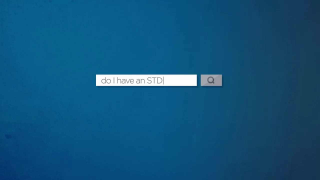HSV-1 Symptoms
Herpes Simplex Virus 1
Herpes Simplex Virus 1 (HSV-1) is a strain of the herpes simplex virus. People may believe that HSV-1 is the same thing as “oral herpes,” and that it always causes cold sores to appear on the mouth or facial region, but that’s not always true. HSV-1 can be acquired in the genital region, creating “genital HSV-1.”
Similarly, HSV-2 is popularly known as “genital herpes,” but HSV-2 can be acquired in the facial region creating “oral HSV-2.” Both HSV-1 and HSV-2 are nearly identical; they share 50% of their DNA and produce almost indistinguishable symptoms. This is why it’s important to get tested for both strains of the disease.
Oral herpes can be transmitted by kissing, sharing eating utensils or drinks, or during sex. Since oral herpes can be contracted from both Type 1 and Type 2 strains of the Herpes Simplex Virus, our doctors recommend getting tested for both of these HSV strains at the same time.
or call 1-800-456-2323 or start a Live Chat
Where does HSV-1 live?
HSV-1 and HSV-2 both have specific locations where they prefer to live in the body. HSV-1 likes to live in the back of the neck, causing outbreaks on the face. HSV-2 tends to live at the base of the spine, leading to outbreaks in the genital area. However, these location preferences are just preferences; each virus will nest at the location closest to where it was acquired and outbreaks will occur based on the nesting location.
How common is Herpes Simplex 1?
HSV-1 is extremely common. In 2012 the World Health Organization estimated that a staggering 67% of the population was infected with the virus, and 140 million of those infected were estimated to have genital HSV-1. Oral HSV-1 is most commonly contracted during childhood after receiving kisses from family members who carry the virus. Cases of oral HSV-1 and genital HSV-1 are on the rise.
How can you get HSV-1?
All strains of the herpes virus are extremely contagious and can be spread through saliva, sores, and skin-to-skin contact where the outbreaks occur. The herpes virus sheds, releasing traces of the virus periodically, even without visible symptoms. This means that it’s able to be contracted even when sores are not present. However, the virus is most contagious when sores are present.
What is an initial herpes outbreak?
The symptoms of the initial outbreak of the HSV-1 virus are a lot more severe than the symptoms in the recurring outbreaks. When the virus is first contracted, typical symptoms may include fever, nausea, headaches, muscle aches, and a general feeling of unwell, accompanied by fluid-filled lesions or “cold sores.” An Initial outbreak may occur days, weeks, or even years after first being exposed to the virus.
What are the recurring symptoms?
HSV-1 is a latent and lifelong virus. This means it lies dormant in the system, only to appear sporadically throughout the course of its host’s lifetime. Recurring outbreaks of HSV-1 are much less severe than the initial outbreak and only include the fluid-filled blisters or “cold sores.” After the blisters form, they eventually break and the fluid oozes out. A yellow scab crusts over the broken blister. Once the scab falls off, there’s new skin underneath. These lesions tend to appear in clusters either on the face or in the genital region, and they can last anywhere from 7 days to 3 weeks. Recurring symptoms appear months or even years after the initial outbreak and can continue to occur randomly throughout the infected person’s life. Symptoms can surface every month, every year, and sometimes they may never appear at all (especially in the case of genital HSV-1). Unfortunately, there is no way to identify exactly when the HSV-1 symptoms will emerge. Outbreaks tend to decrease in frequency and severity as time goes on because the body builds up more antibodies to fight off the virus.
Simplex 1 Treatment
There is currently no cure for either strand of the herpes simplex virus. However, both can be managed with prescribed antivirals.
Medication
Acyclovir, famciclovir, and valacyclovir are three of the most common antivirals used to help manage HSV-1 and HSV-2. Of the three, acyclovir is most prescribed for HSV-1. All three help by shortening the life cycle of the virus to accelerate the healing time for the cold sore symptoms. Acyclovir can be taken orally or applied topically, but the oral route is much more effective. Acyclovir must be prescribed by a doctor.
Our FDA-cleared HSV-1 test has a sensitivity rating of 98%, and a specificity of 98%, making it extremely accurate. To purchase an HSV-1 test, Click here.
- "Herpes Simplex Virus." World Health Organization. https://www.who.int/news-room/fact-sheets/detail/herpes-simplex-virus
- "Herpes Treatment." American Sexual Health Association. https://www.ashasexualhealth.org/stdsstis/herpes/herpes-treatment/
- "Herpes Simplex | Genital Herpes | Herpes Simplex 1." MedlinePlus. https://medlineplus.gov/herpessimplex.html
- "Herpes Simplex Virus (HSV) Mouth Infection." Herpes Simplex Virus (HSV) Mouth Infection - Health Encyclopedia - University of Rochester Medical Center. https://www.urmc.rochester.edu/encyclopedia/content.aspx?contenttypeid=85&contentid=P00888
Medically Reviewed by Colleen Ryan, MD on June 7, 2023
Written by Alexa Amador on April 5, 2018
Fast, Private & Affordable
Our panels are carefully designed by our physicians to provide you with complete peace
of mind.
What should I get tested for?
Find out what test is right for you using our personalized Test Recommender.




